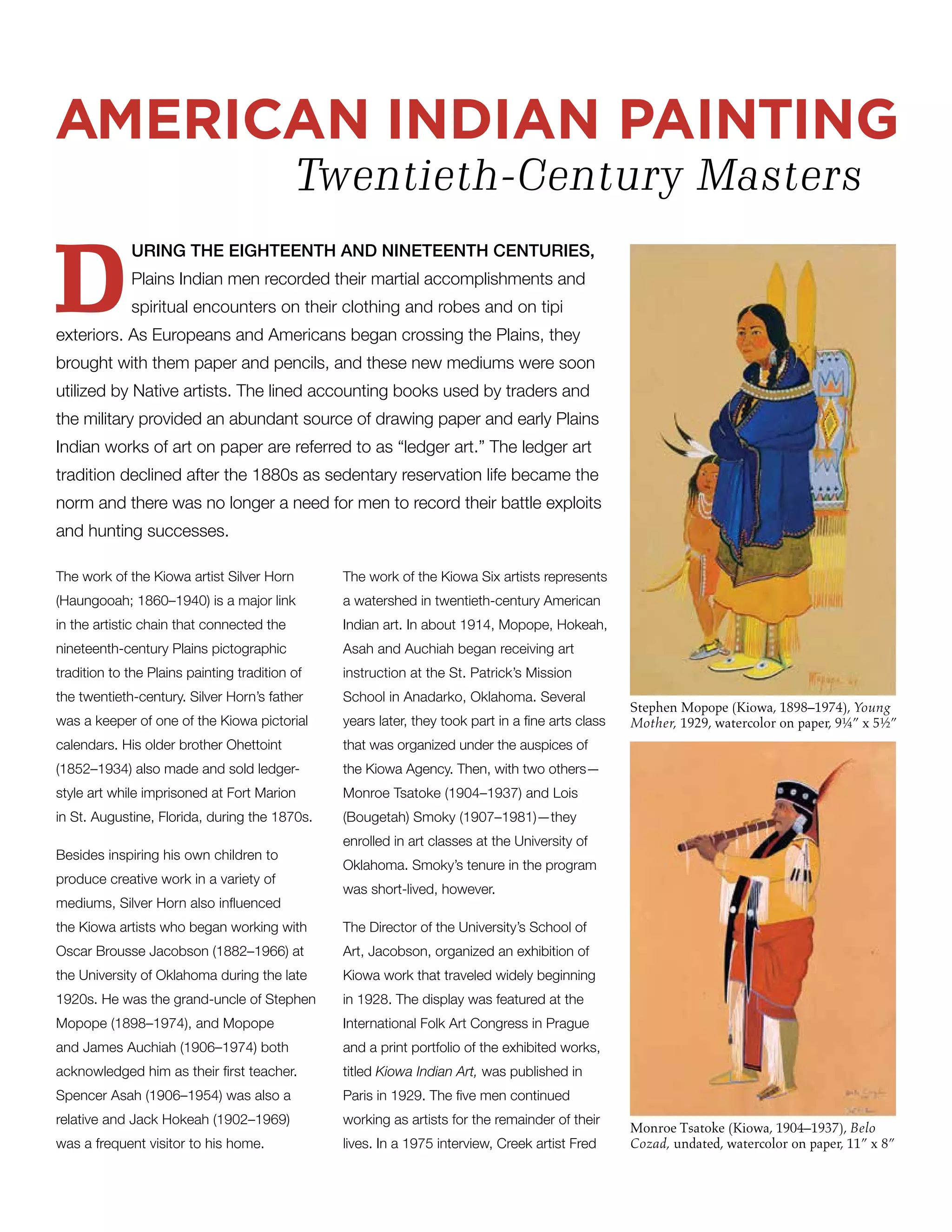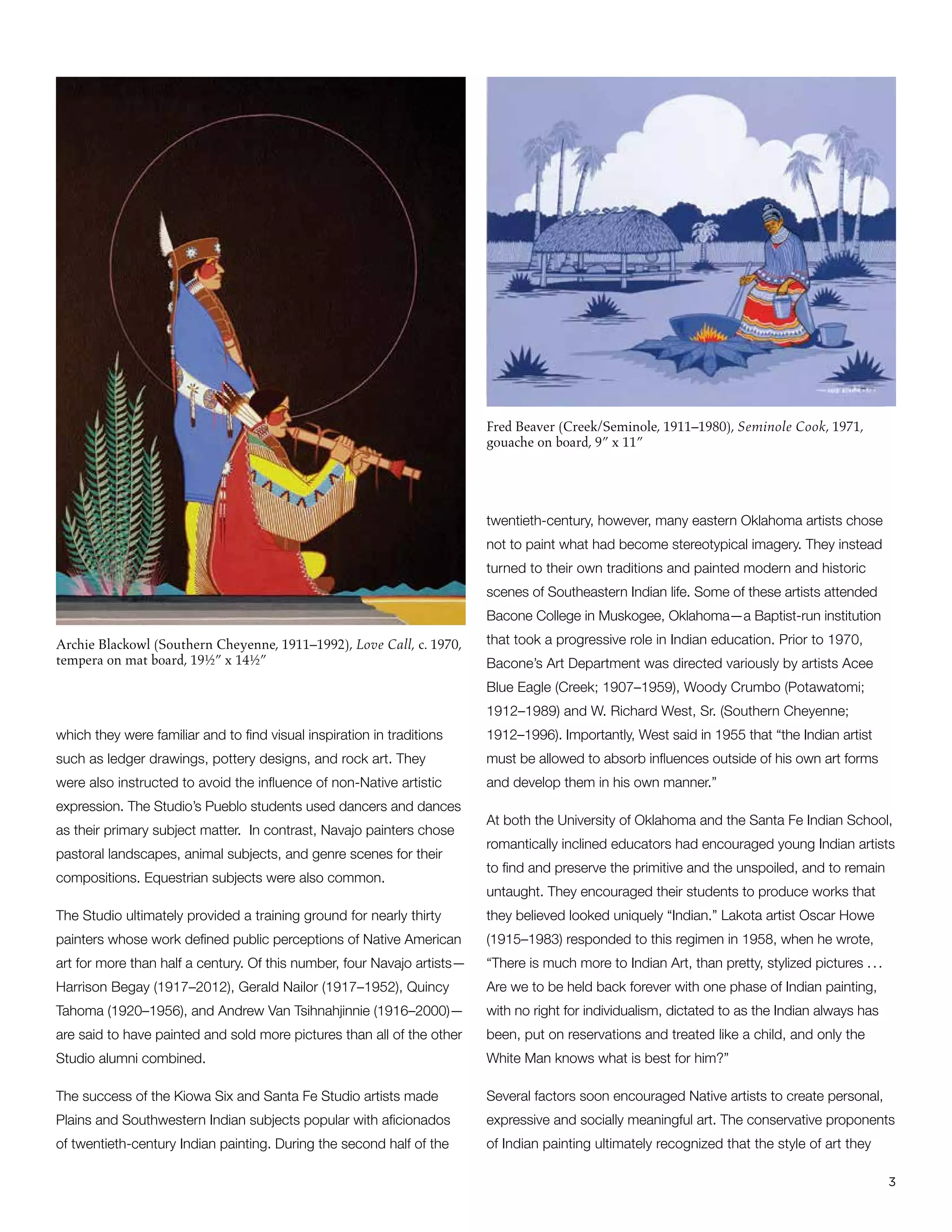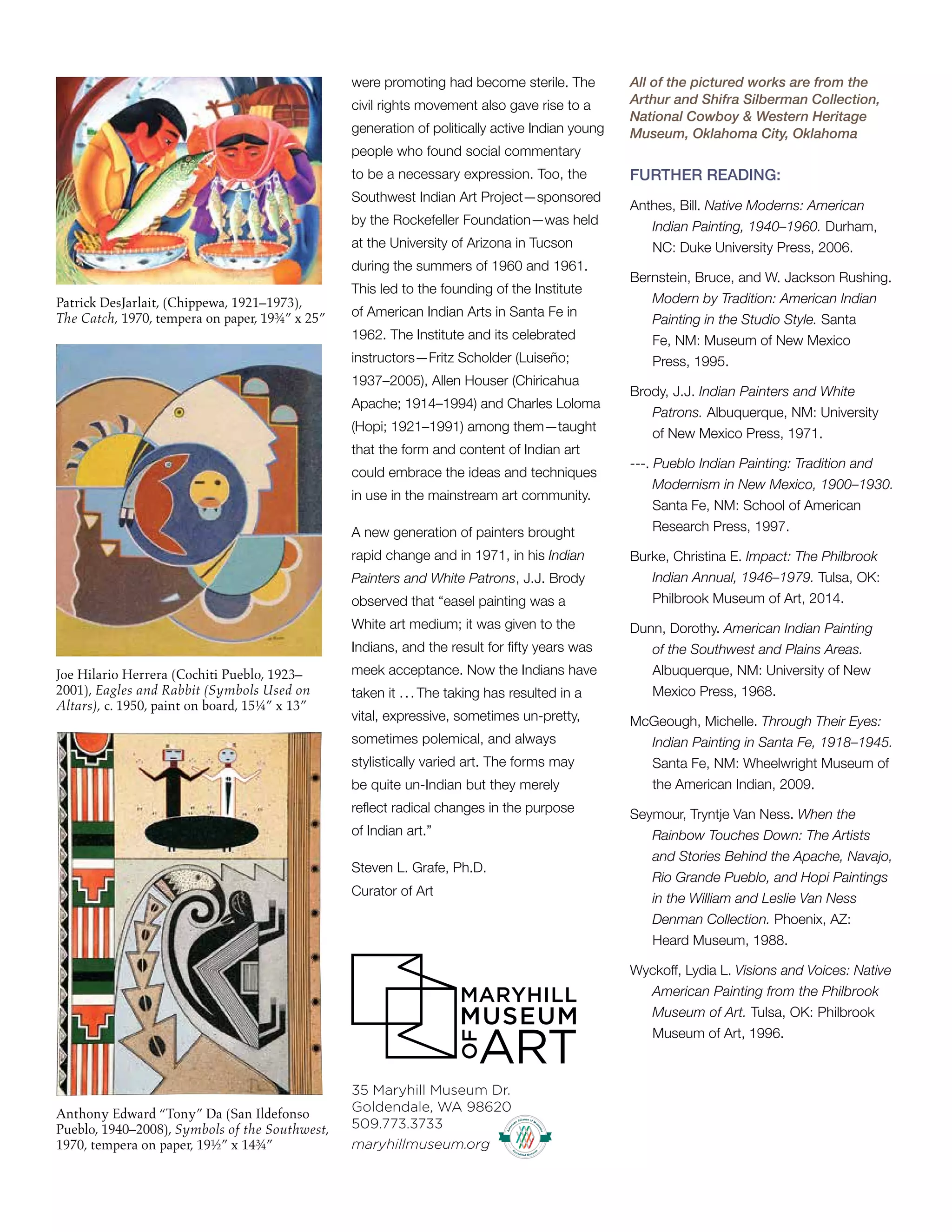The document summarizes the history of Native American art on paper from the late 19th century to the mid-20th century. It describes how Plains Indian men originally recorded exploits on robes and clothing, then adopted paper and pencils from Europeans/Americans. Ledger art developed using traders' accounting books. Later, the Kiowa Six artists and students at the Santa Fe Indian School developed distinctive styles in the early 20th century, influencing later Native artists to embrace individualism rather than prescribed styles. The document outlines the development of Native art traditions across different regions.

![2
Allan C. Houser (Chiricahua Apache, 1914–1994), Buffalo Hunt, 1952,
gouache on illustration board, 17¼” x 26½”
Harrison Begay (Navajo, 1917–2012), Navajo Maidens, c. 1970,
watercolor on paper, 14” x 10”
Beaver (1911–1980) commented on the education and legacy
of the Kiowa Six painters and the fact that they were largely self-
taught: “The way we paint, that came from us. Just like I taught
myself to paint; so did Mopope and Tsatoke and all those Kiowa
boys. . . . I saw those Kiowas and I knew Dr. Jacobson pretty well . . .
I know that Miss Peters pretty much let them do what they wanted
to do. Their art was their own, all the way.”
Works of art on paper by Southwest Indian artists had appeared
prior to 1900, especially among Native artists working with
anthropologists. After 1910, Edgar Lee Hewett (1865–1946)
encouraged the work of artists who were part of what is now
called the San Ildefonso Watercolor Movement. He arranged for
the Pueblo men who were working for him in excavations in Frijoles
Canyon (near present-day Los Alamos) to receive art supplies and
he also commissioned paintings from them. The resultant works
usually showed ceremonial scenes or other Pueblo activities.
Artists linked with the movement included its “founder,” Crescencio
Martinez (1879–1918), his nephew, Awa Tsireh (Alfonso Roybal;
1898–1955), and Julian Martinez (1879–1943; husband of the
famous potter, Maria). Hewett also encouraged the talents of Tonita
Peña (Quah Ah; 1893–1945), who was the only woman associated
with the early watercolorists.
In about 1915, Hopi artist Fred Kabotie (c. 1900–1986) was forced
to leave Second Mesa in Arizona and attend the Santa Fe Indian
School. Several years later, the school’s new superintendent, John
DeHuff (1872–1945), allowed his wife, Elizabeth (1892–1983), to
begin teaching painting to students. The classes also included well-
known artists Otis Polelonema (Hopi; 1902–1981) and Velino Shije
Herrera (Zia; 1902–1973).
When talking about his earliest work, Kabotie said, “When you’re
so remote from your own people, you get lonesome. You don’t paint
what’s around you, you paint what you have in mind. Loneliness
moves you to express something of your home, your background.”
He also said, “”I had been away [from Hopi] so long then that I
was yearning . . . getting lonesome for my Hopi way, and I started
painting katsinas, because I missed them. . . .” Despite these
innocent sentiments, controversy erupted around the DeHuffs’ art
classes and critics alleged that the sessions encouraged paganism,
the recollection of traditional stories and the recording of Native
religious activity. As a result, John DeHuff was eventually demoted
and forced to leave the Indian School.
Attitudes eventually changed and when a painting studio was
founded at the Santa Fe Indian School in 1932, it marked a major
milestone in the development of twentieth-century American Indian
art. Santa Fe students were encouraged to paint subjects with](https://image.slidesharecdn.com/c4126911-8a66-4fab-98ea-d945d1546c94-161010213557/75/American-Indian-Painting-gallery-guide-2-2048.jpg)

